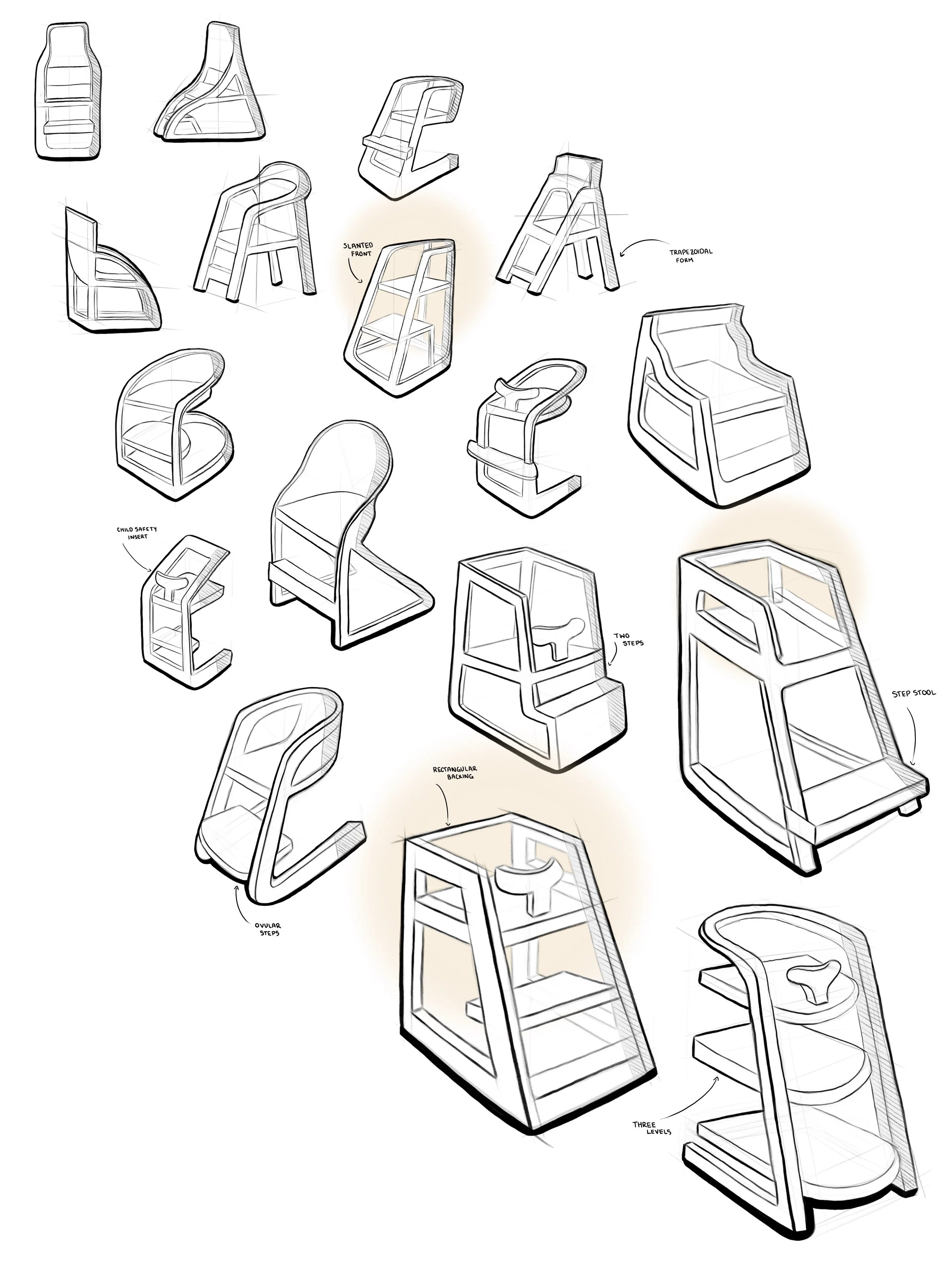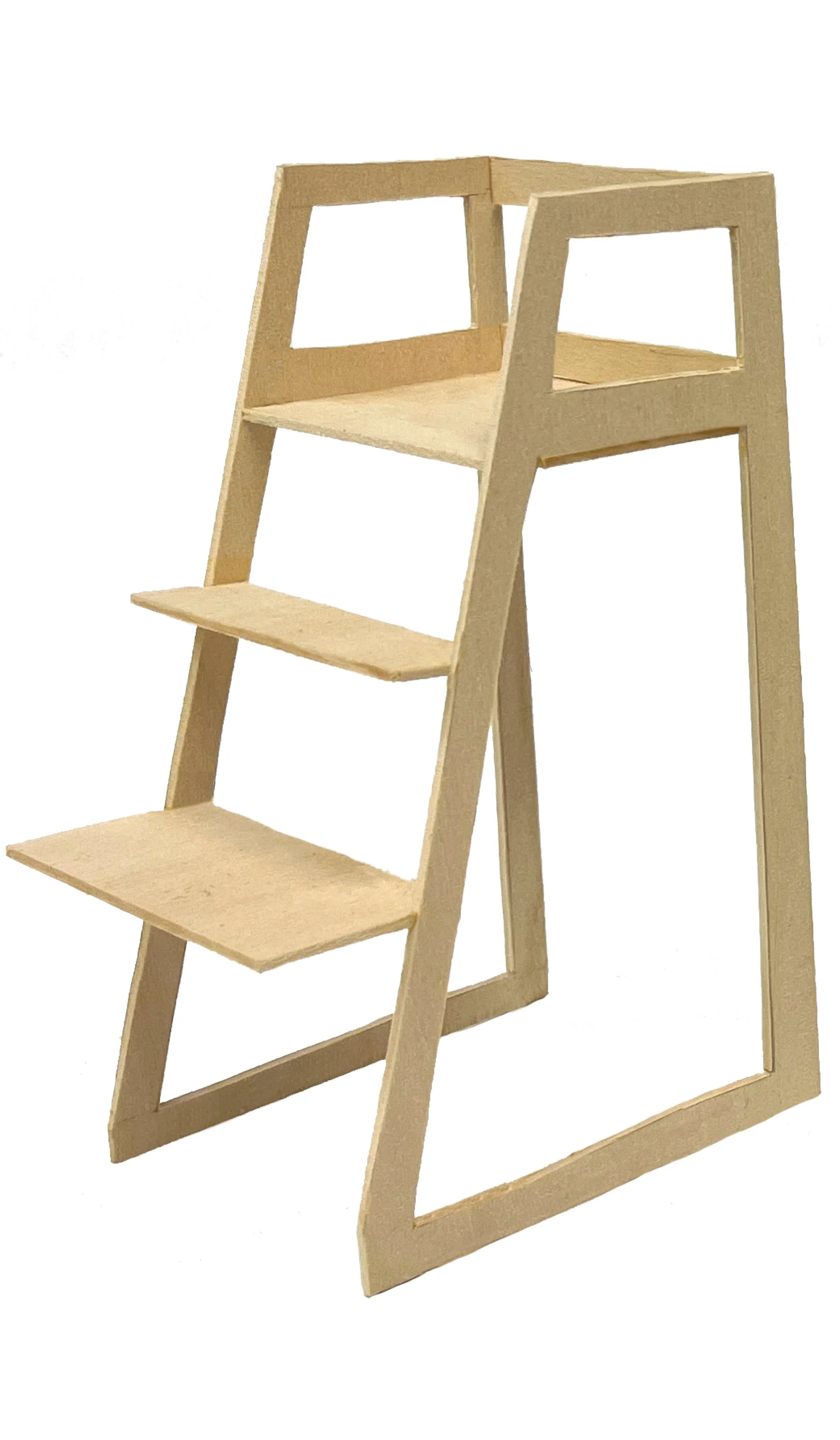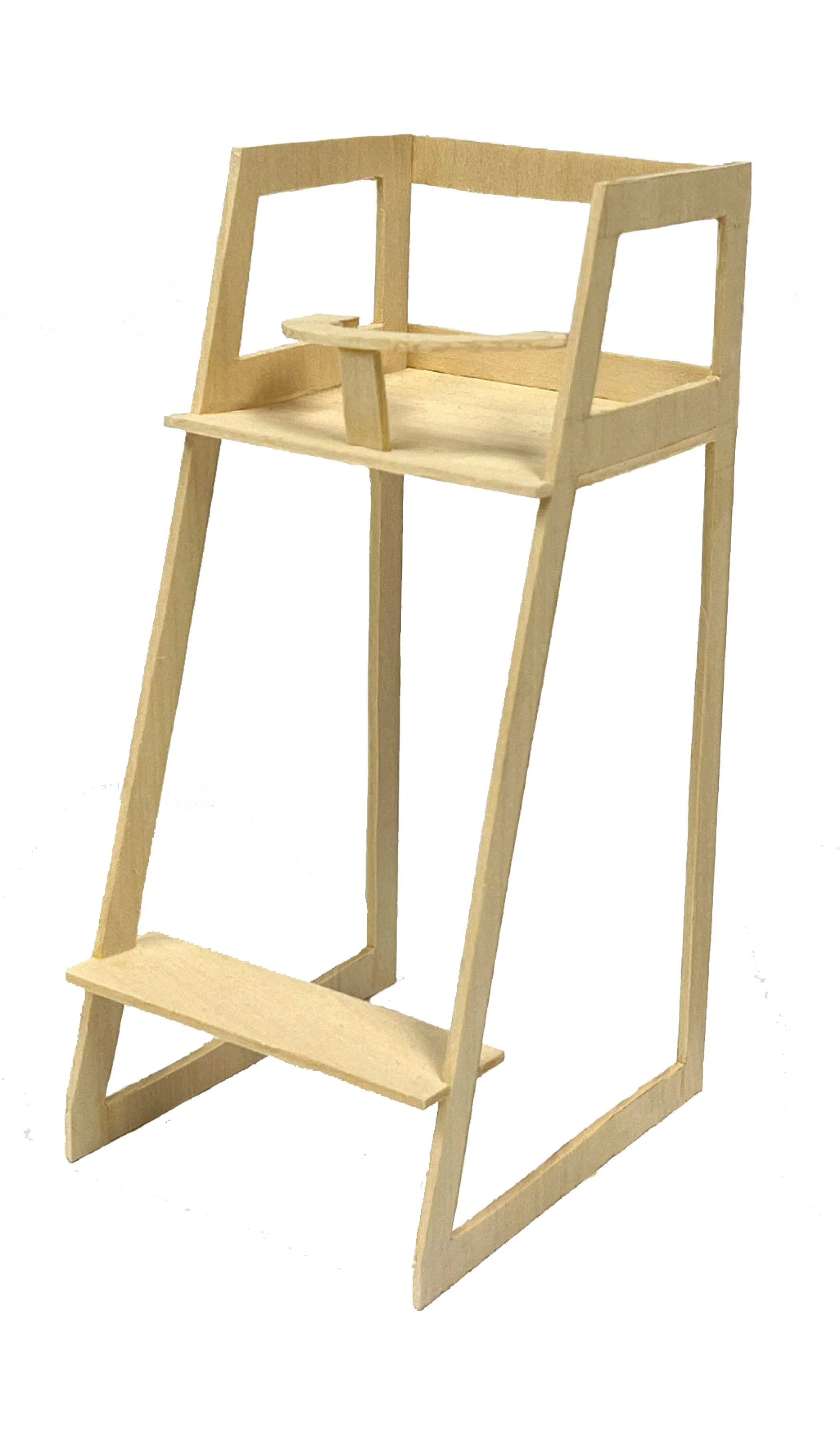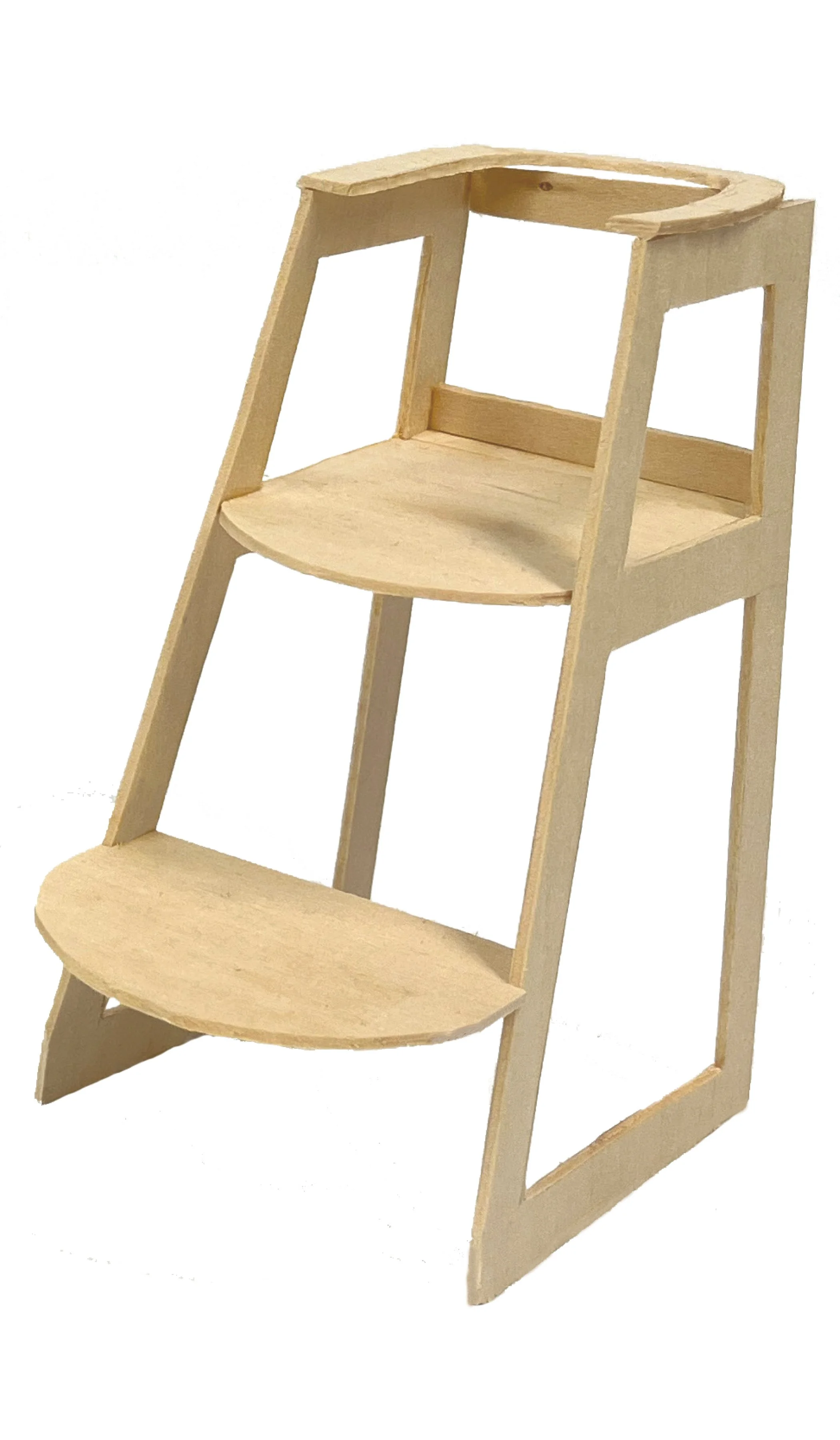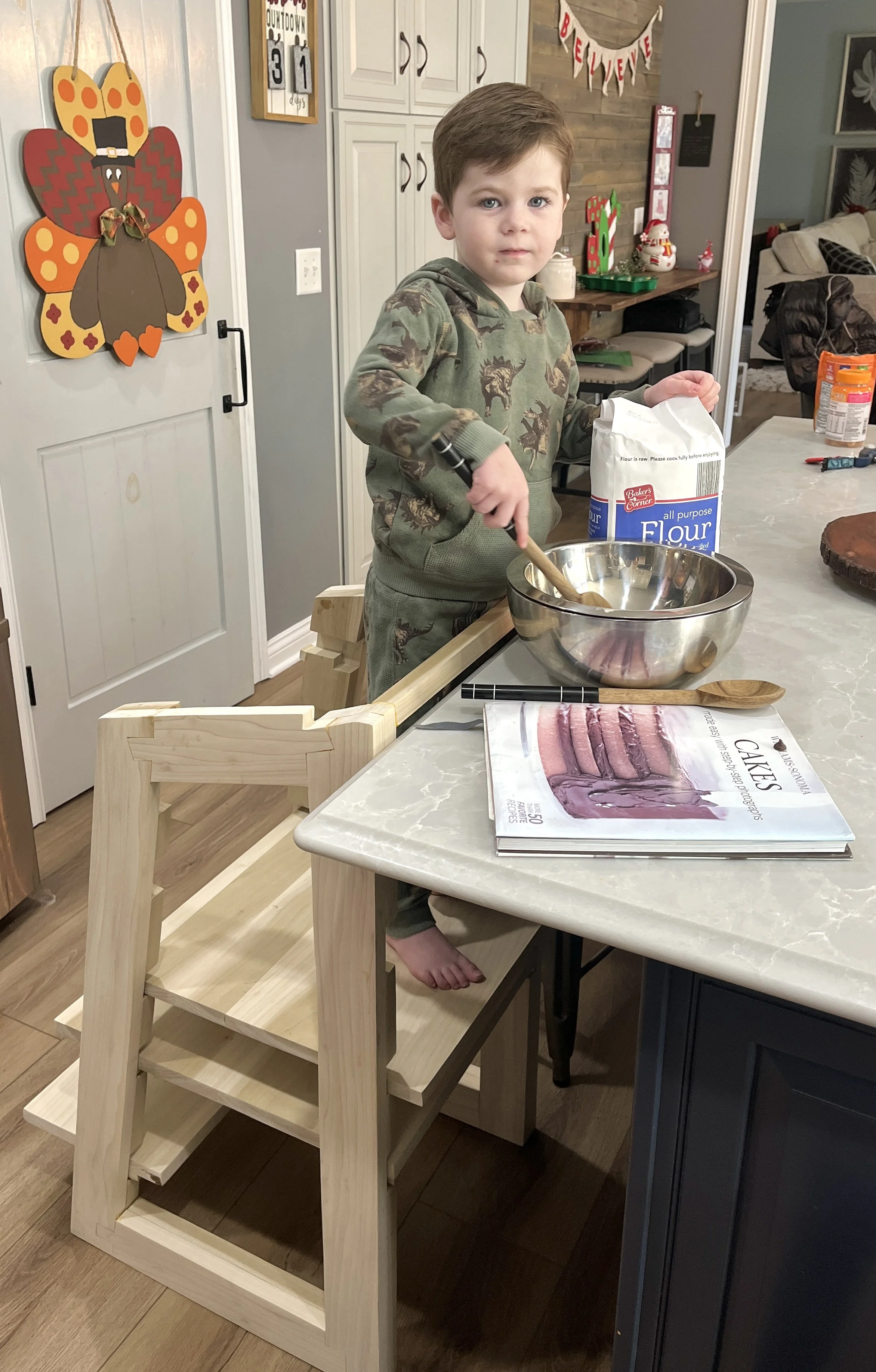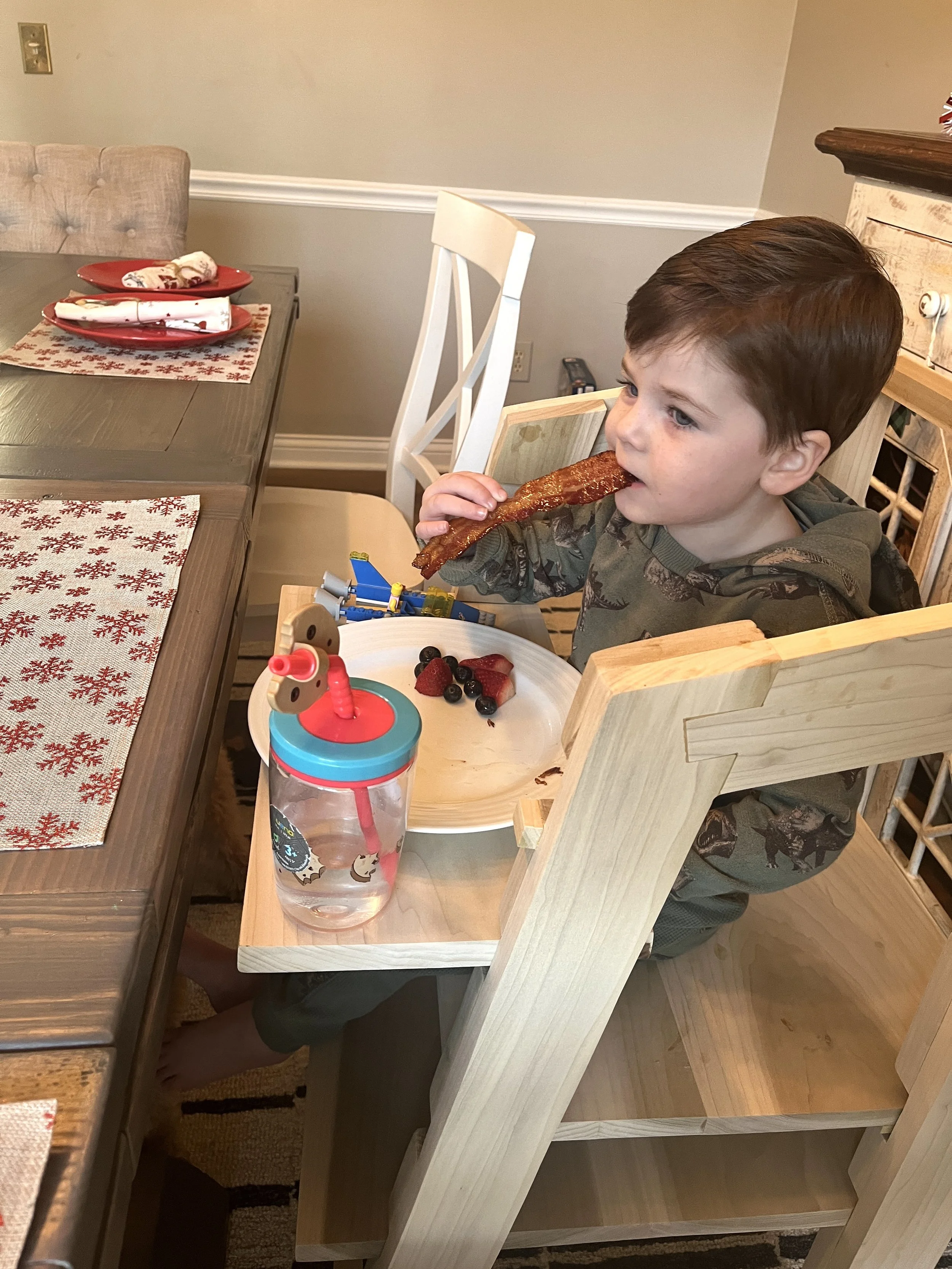Moda
A versatile furniture piece for the growing child.
Duration
5 Weeks
Fall 2023
For the growing child, how can I design an adjustable furniture piece that grows along with them and promotes their involvement and presence in home life.
Problem Statement
Design Research
Form Ideation
Woodworking
Product Visualization
Disciplines
To better understand the needs of a user within this younger target audience, I reflected on the experience of a family member of mine who fits the consumer description.
User Profile
Tyler, Preschooler
Tyler is the youngest of both his immediate and extended family. He loves to be around everyone and will never pass up the chance to play, make crafts, and bake sweets.
He gets frustrated about how little he is and how big everyone else is. His mom often has to help Tyler, constantly picking him up and getting his booster seat so he is included in the current activity.
Tyler wants to be just like the big kids, becoming more independent and joining the rest of the family. He is looking for something that will allow him to be at the same level as the rest of his family to participate in the fun.
Designing for a younger audience presents the challenge of understanding the perspective of someone much younger and the features they want in a product.
Creative Strategy
Inclusive.
An accommodating furniture piece should be inclusive in both their function and how they are implemented within a space.
Adjustable.
Kids come in all shapes and sizes and are constantly growing. A product should embrace this change and provide a solution that is both multi-purpose and sustainable.
Family-oriented.
At the heart of it all, furniture pieces should promote a happy, healthy family lifestyle in any phase of their life.
Design Objectives
Who?
For the growing child.
What?
An adjustable furniture piece that promotes inclusivity.
Where?
The product is designed to be utilized within a home.
When?
The child wants to engage in an activity at a table or countertop.
Why?
To provide a versatile furniture piece to promote involvement in home life.
By gaining visualization from other versatile products, I was directed to pursue using only joinery for the assembly of Moda. A sliding joint best allows for modifiable features to transform the product into something new.
Design Inspiration
My quick ideation of design directions where I focused on the general form and how it can be reflected in prototyped models and a fully functional end solution.
Sketching
The exploration of implementing design features ideated in sketches and applying them to small-scale physical models. Visualization of a chosen design path allows for proceeding in the analysis of function.
Prototypes
Model 1.
Trapezoidal form with two tiered steps and a high chair seat.
Model 2.
Trapezoidal form with detachable child safety feature and taller rails.
Model 3.
More organic form with trapezoidal legs and large, ovular steps.
The fully functional end solution that showcases the different arrangements and capabilities. The sliding joinery is what supports the table in transforming into a step and the chair into a stool.
Adjustable
High chair with table.
High chair.
Middle stool.
Low stool.
Without levels.
The product is implemented within an environment. Tyler highlights the product's different uses, fulfilling the creative strategy of being inclusive, adjustable, and family-oriented.







